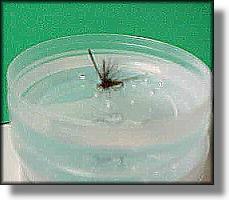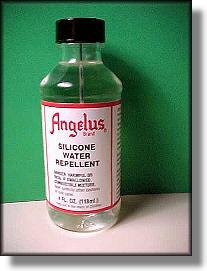Dry fly fishing is the pinnacle of our sport. Theodore Gordon, the "father of American flyfishing"
would have us fish no other way, and indeed many contemporary anglers experience their greatest
delight in catching a trout on a dry fly.
It certainly does provide us with plenty of excitement, and challenge. Just keeping our fly on the water,
rather than in it, can be a real test of our abilities as an angler.
Nymphs and wet flies have a distinct advantage over the dry fly besides the fact that fish consume
90% of their diet on subsurface foods, these flies do not need to float. They get wet, they sink, they
are now at the trout's level, they get eaten and we strike.
After a fish or two, our sunk flies can look pretty well worn, but they still work and go on and on
catching fish.
If we are fortunate enough to take a couple of fish on a dry fly, we can almost count on retiring it
immediately. Between being drug through the water during the fight, and being slimed by the fish,
it will more than likely sink on the next cast, necessitating a change in flies. Though this does not
require much, it does take time, but that is part of the dry fly game. At least you have a fish to show
for the exercise.
Any brand new, fresh dry fly will float, if tied properly. But, after a few drifts through a run, even false
casting will not restore its proper performance on the water, and it begins to sink.
Now we all carry dry fly floatants of various and sundry types. Sprays work OK, as do pastes, and
liquids, but they each have disadvantages. Sprays get floatant all over the stream and us as much
as they do on the fly. Pastes can mat a fly unless used sparingly, and we all get a bit heavy handed
at times. Liquids are the choice of many, but they leave a residue on your hands, and they leak on
your waders and stain your clothing.
How many times have you been convinced that there is an easier way, and sworn to try to eliminate
this aggravation.

They fly in the above picture has been floating for two hours, and it is still upright and floating like a cork.
This is a Dry Fly!
The secret? The same materials that you are probably using on stream are what keep this fly afloat.
Silicone!
But, with a slight twist. This silicone was put in the fly immediately after it was tied. In fact it is the
last step in the tying process. And the easiest step you will ever perform!
This fly was immersed in liquid silicone for about five minutes. "Right from the vice into the soup,
and when on the stream you won't need the goop!"

It takes me about five minutes or a tad better to tie a dry fly. So, upon completion of a fly, soak it in
the liquid silicone while you tie the next. When you put the newly tied fly into the silicone take out
the last one and place it on a paper towel lined container so it doesn't blow away.
Now just let them sit for a day or two so they can dry. Next put them into your fly box and leave
all of that other gunk at home. Your flies will float better than ever, without all that mess.
Have you ever seen the slick many of the spray and liquid floatants leave on the water? What
trout do you suppose expects his dinner to be served that way?
Yes, you can hold your fly off to the side of the feeding lane while most of that oily mess leaches out.
When you let the silicone treatment described above, there is no slick. Just a very high floating
fly that will drift naturally and catch fish. You will not be changing wet soggy flies and using
precious fishing time to do so either!
Save your pastes too, but don't leave them at home, they are just the ticket for the greased leader
technique we often use with emergers.
Now before you all start sending me emails (which I answer by the way) espousing the virtues
of Rain X and Thompsons Water Seal, and a myriad of other floatants, a future column will put
these head to head, in a who floats best for longer with less mess and etc. test.
In the meantime, this stuff works great and a four ounce bottle will set you back about three
dollars, so it is obviously cheaper than many of the "prepared" dressings sold at the local fly
shop. It can be found in places where waterproof work and hunting boots are sold.
If you have any tips or techniques, send them along, most of this
material has been stolen from somebody, might as well steal your ideas
too!~ George E. Emanuel
(Chat Room Host Muddler)
|





